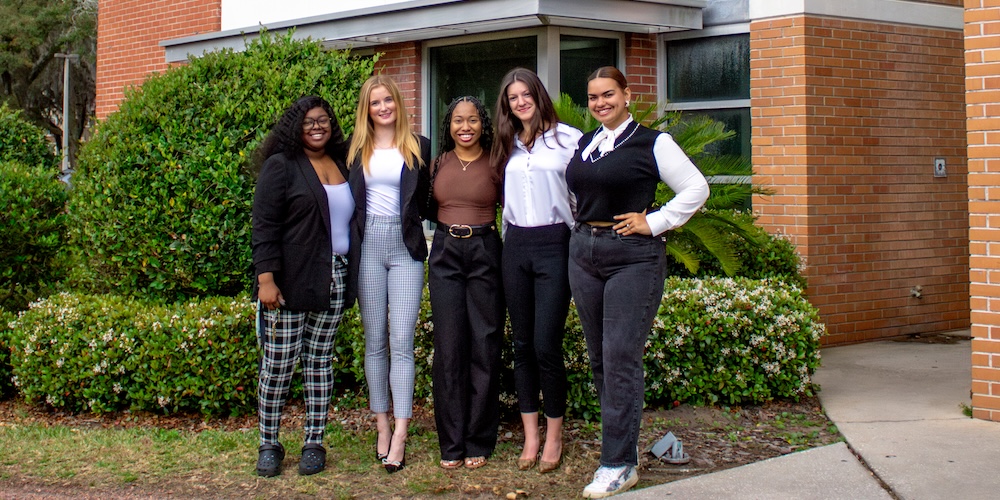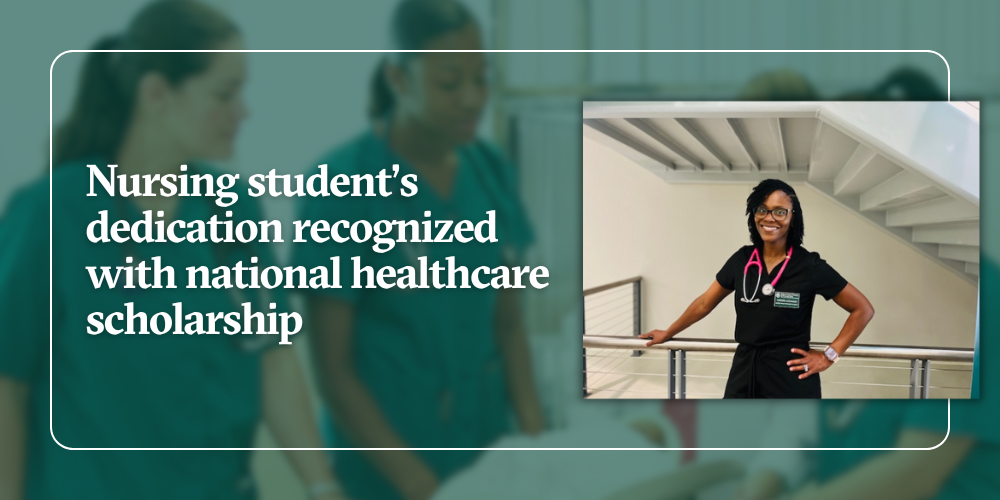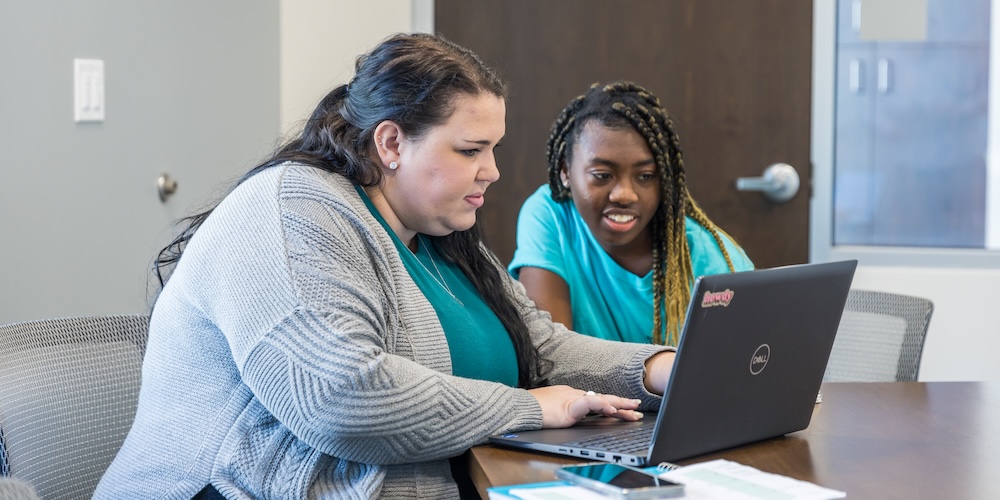Emerging technologies. Global pandemic. Revamped lifestyles. Economic recession. Geopolitical upheaval. Changing expectations of the next generation. Amidst the uncertainty impacting decision-making across higher education, business, nonprofits and government, Jacksonville University President Tim Cost sees a host of opportunities on the horizon. WAVE sat down with him recently to explore the innovative ways JU is transforming to meet the needs of its future graduates.
WAVE: President Cost, the University recently announced a reimagining of its offerings that are playing out both in strategy and in organization. Can you talk about how you and the University leadership team thought about the evolution from where we’ve been to where we’re going?
President Cost: Honoring the history, heritage and legacy of a great university is important. Students and faculty rely on a preeminent university for stability, longevity, and a sense of home. We want them to continue to feel that way. As a leadership team, we balance the choices around honoring and supporting that heritage with the clear opportunities in front of a university like this one, thanks to our faculty and staff and their flexibility. We have a very promising set of options to consider and, fortunately, we can pivot from what we’ve done so well traditionally to those areas that are emerging and create more opportunity for our students.
WAVE: How do you decide where to make those investments and bridge that gap?
President Cost: We’re focused on solutions and delivering a high-quality education. Our most recent focus areas are both new fields of study that sit adjacent to our current work, and also the natural extension of our existing fields of study. When we look at new fields of study, for example, we didn’t teach the applied health sciences here for 80 years, and now it’s one of the biggest schools in the university. Health sciences, speech language pathology, kinesiology, mental health counseling, health informatics, occupational therapy, physical therapy, medical sciences, respiratory therapy. We are leading the industry in our region in many of those fields, and our graduates are well-prepared and in high demand. When we look at extending existing fields of study, it’s about accelerating and deepening. We’ve always taught the sciences, of course, and now the sciences have morphed into opportunities around data science and engineering, cyber, artificial intelligence, drones, robotics, space studies, animation, visual design, virtual reality and game design.
I believe we will continue to do what we do well, and then to pursue—and succeed in—a select handful of new areas. And we look for opportunities to extend from undergraduate into advanced degrees, with natural crossover points between fields. That’s where we start to see a multilayered set of opportunities for our faculty and students. The blending of math and the arts, or philosophy and economics, communications and marine sciences, public policy and finance, just to name a few. We are enabling our students to customize their own paths using a custom app we’ve designed specifically for them. Exciting. You have to embrace the potential for growth. It carries change, sure, but it offers potential and promise. Growth done well—pragmatically, thoughtfully, strategically—does not leave any of your history behind. It answers the call of these compelling opportunities, which makes the whole university stronger. It enables us to invest more in our best efforts from 1934 to 2022, and in the important and changing marketplace of ideas from 2022 onward.
WAVE: Can you talk about the responsibility you feel to the students as you consider the future of their University?
President Cost: Students are rational self-maximizers, and we love them for that. We love them for being ambitious and competitive and relentlessly forward-looking. Students don’t owe their university any forgiveness if we are not teaching what they want to learn. So, we better be offering things of interest to students as they get here. And that means we are synthesizing and integrating inputs from all over to meet their needs. That’s my commitment to our students: to have conversations with CEOs, elected officials and education leaders; to tap into markets; to understand the economics; to create partnerships that enable us to exceed our students’ expectations. We talk regularly at the Cabinet level about anticipating the needs of today’s 13- and 14-year-olds when they arrive here, hungry to learn as undergraduate, five years from now.
Leaders are fond of saying “half the jobs of the future haven’t even been invented yet.” That’s been true since the Industrial Revolution, but that doesn’t mean we should sit around waiting for them to appear. We have to have a point of view on what’s coming and how we’ll meet that future. We are committed to being a relevant player in the world of data, science, tech, STEAM, visual arts, cyber, as it impacts and benefits what we offer today.
WAVE: How has the pandemic impacted your ability to predict the University’s future needs, and your ability to plan now to meet those needs?
President Cost: Well, there’s a premium on adaptability. We rely on our smartest and most innovative, maybe not always our longest-tenured, to rise to this occasion. Universities aren’t always considered flexible and responsive, but I like our drive and determination. A lot. COVID has changed everything about everything, everywhere, and it continues. I’ve never seen anything simultaneously, worldwide, dampen revenues while also inflating expenses. The level of accelerated disruption is historic. Many of the core beliefs we rely on to make sound university decisions are being rocked at the core by the uncertainty around the world. We’re withstanding an unprecedented level of exogenous shock. But we have to adjust, decide, move through it for the good of our people and our students. And it’s the same for our partners. We’re now nearly two years into a situation that on some days looks brand new, standing on a base of fatigue, and that’s making it more challenging.
The investments we’re making and the reimagining of our offerings aren’t solely in reaction to COVID. They’re the result of years of work that is now being informed by the challenges of COVID. The overarching strategy of the university is a living one: constantly being reshaped and reprioritized as attractive opportunities and new trends emerge. Our risk tolerance may be slightly different; we’re only taking on new areas for which we can see a clear horizon of demand. Our investments may feel like a million stars in the sky, but they are constellations. They’re connected to form the reality of our future.
WAVE: Speaking of emerging fields, JU is investing heavily in the health sciences and building strong partnerships with Baptist Health, Availity and Brooks Rehabilitation, among others. At the same time, you’re expanding opportunities in your other colleges. Can you talk about those?
President Cost: We’re seeing a natural nexus out there—the world that supports our programs and hires our graduates doesn’t think in terms of the silos represented by most universities. They want dynamic, flexible, hard-working stars in all fields. So we purposely blur the lines between our offerings to give more options to the student in what they learn and to give more assurance to the employer of how multi-dimensional our graduates are.
For example, the shortage of healthcare professionals is at a crisis point. All of our partners need nurses and mental health counselors. Baptist Health, Availity and Brooks Rehabilitation stepped in with us, helped us chart the path, and offered critical resources.
What we’re seeing is the shifting of how medicine is being practiced. Healthcare will become much more dispersed. There will always be hospitals, but the care will be much more in the home, or virtual. You’ll see more intermediaries, like highly trained nurses, making more decisions with patients. And the specialization here is really something: nurses will very soon be called on to embrace big data and artificial intelligence tools, for example. At Jacksonville University, people can get their nursing degrees on a traditional track or after they’ve gotten their college degree in something else. They want to upskill themselves to cross over, and we create an accessible pathway for that.
In the Davis College of Business, we’re seeing more businesses hiring not only for the basics—finance, marketing, accounting, statistics, those are the go-tos. Those will always be the language of the modern business, but we’re seeing a much heavier tech overlay, whether it’s engineering, data analytics and data science and other similar fields. So that begins to inform, and modify, and then dominate where we go— right down to how you organize the offerings of the College and our STEAM Institute. What you’ve seen us do here recently is bring science, technology and engineering much closer to the core teachings in the Davis College. That allows for lots more cross-collaboration in business, science and technology, and aviation sciences.
Thinking about the Linda Berry Stein College: I believe while many universities have been turning down the volume knob on the classic humanities, that’s not our view. Creativity, critical thinking, communications, being able to mentally walk 360 degrees around a problem to assess it and solve it—that’s what the humanities teaches, and that’s what employers are looking for in their new hires. What we did for the first time in this university’s history is to take the core humanities, where we’ve been well-known for decades, and create a School of Humanities. The creation of this school rightly elevates its stature and sends a signal of respect and priority to those who are teaching it and those who are studying it.
For our College of Arts and Sciences, the possibilities are endless. In the original college of the university, you begin to go up the ladder from the bachelor’s level, up into masters, and then come across to make connections in other fields, through to the Public Policy Institute or Marine Science Research Institute. Our students here are global citizens and we’re proud of their versatility. If you want to come here to be a data scientist in the class of 2026, you should be able to do that. And if you want to study Kierkegaard too, you should be able to do that.
WAVE: As you step into these emerging fields, what is the value of the market-driven partnerships you’ve been able to create?
President Cost: Right now, I would say that one of our advantages is that we can be truly responsive to needs identified by our partners. The earlier the better. We have more, deeper partnerships with more relevant players in the global economy than ever before. We don’t need to guess about the trajectory of most every major field we’re pursuing—we can go to the experts who will have those conversations with us, because they’ve seen those conversations turn into something beneficial to their business when they can hire our well-prepared graduates.
I believe work ethic matters. When everybody says, oh, you don’t have to work harder, you have to work smarter, I say, “right, do both.” We make a very concerted effort to dramatically widen the horizon of what we’re offering and considering. We look at things the way a growth-oriented institution looks at them. And that resonates with our partners because that’s unique for most universities. We place a high premium on listening to expertise outside, across a much wider range of potential opportunities. And then we spend a lot of time in-house discussing, debating, analyzing, iterating on everything. I believe the role of a university like this one is to be a well-connected microorganism in a larger ecosystem called student success, called a thriving economy, called a well-served community.
It’s a celebration of a university’s future to see it as a central contributor to the health and vitality of our region. Universities are held in such high regard because they’re an important link in the long chain that starts when a young person goes to school at age five and ends up a well-educated, fully functioning economic entity, happily succeeding, well-prepared at age 25 or 30. In the middle of that, the formative four, six or eight years that can completely heighten their ascent happens at this university. And we feel blessed for that and we celebrate it.
WAVE: What makes you most hopeful for the future?
President Cost: The resilience of our students. Our faculty teach them well. They’re bright and tenacious, and they have high expectations of themselves and of their university. They’re in their third academic year that’s been impacted by COVID, and they’ve adapted brilliantly. Many have even run toward the danger to help and to serve our community. That keeps us all inspired. They embrace innovation, speed, agility, responsiveness. I think we have those things in spades and now we will make good on our potential for the benefit of their future.


